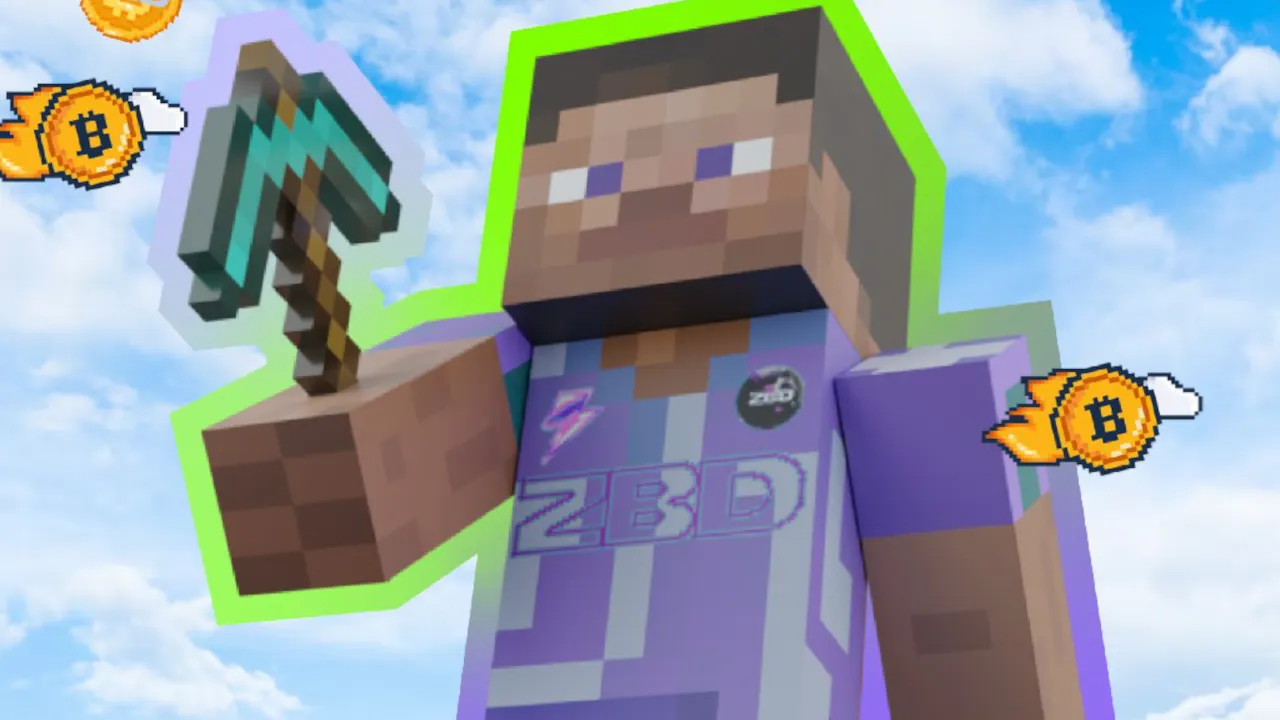One of the world’s most popular video games can now earn players Bitcoin, thanks to a new Minecraft integration facilitated by Bitcoin-centric payments startup, Zebedee.
Satlantis, a Bitcoin-themed Minecraft server operated by community members, has integrated Zebedee’s Lightning Network-enabled gaming tech, letting players earn Bitcoin for playing. It works with the Java edition of Minecraft on computers, and players can withdraw their earnings to the ZBD wallet app on iOS or Android.
It’s an unofficial integration of Bitcoin tech that isn’t endorsed by Minecraft developer Mojang or publisher Microsoft. The Satlantis server is broadly inspired by the leading cryptocurrency, with gameplay elements inspired by Bitcoin mining rigs and mining pool collectives, plus the ability to boost your mining “hash rate” to have a better chance of winning Bitcoin in-game.
@Minecraft, meet #Bitcoin 🟧🧡
Introducing @PlaySatlantis, where you can earn real bitcoin in the world's most popular game.
All powered by the #ZEBEDEEapi
🦾⚡Supercharge your creation w/ the power of Bitcoin & get started w/ ZEBEDEE for free today:https://t.co/PRAH5i4EVM pic.twitter.com/WBDwepIJg3
— ZEBEDEE (@zebedeeio) July 10, 2023
Granted, your winnings are likely to be modest. Satlantis is giving out over 1 million satoshis per week, according to Zebedee, which is 1% of a Bitcoin—in other words, it’s just over $300 total per week worth of Bitcoin. A satoshi is the smallest unit of measure for a Bitcoin; each Bitcoin contains 100 million satoshis.
But that’s pretty typical for games and apps that reward players with Bitcoin, Ethereum, and other cryptocurrencies. Games like Sweet Bitcoin and Ethereum Blast that Decrypt has reviewed typically pay out about a few cents’ worth of cryptocurrency per hour of play.
In addition to various mobile games that use Zebedee’s gaming tech, the firm also previously launched specialized Bitcoin-earning servers for another major traditional gaming smash: Valve’s squad-based shooter, Counter-Strike: Global Offensive. Zebedee enabled Bitcoin wagering and rewards in that game back in 2021.
And this isn’t the first time that Minecraft has crossed paths with Bitcoin, either. Years back, a now-shuttered server called BitQuest let players find and collect small amounts of Bitcoin, which could be spent in-game. Other fan-run Minecraft servers have experimented with NFT and crypto integrations in the past.
However, Microsoft plans to crack down on such integrations. In July 2022, the tech giant announced that it planned to ban NFTs from all Minecraft servers, stating that NFT-based token-gated features are “not inclusive of all our community and create a scenario of the haves and the have-nots.”
One year later, Microsoft still hasn’t updated Minecraft’s terms and conditions to reflect the expected NFT ban. In June, however, a Microsoft representative confirmed to Decrypt that Minecraft still plans to follow through with the move.
Despite Minecraft’s NFT ban not yet becoming official, some fan-run servers and derivative projects either shut down or changed course. NFT Worlds, a project that sold NFT-based land plots for a dedicated Minecraft server, ultimately opted to create its own similar game instead.
Minecraft’s original news post about the planned ban also mentioned “other blockchain technologies,” which could include cryptocurrency. A Satlantis representative suggested to Decrypt that it is unconcerned, given that larger, more established servers already violate Minecraft's end user licensing agreement (EULA).
"The EULA is quite restrictive actually, but from our research, it seems to be more of a defensive contract that Mojang can use in case of any issues that an individual server runs into," they said. "They do not seem to enforce it unless compelled to, as there are many large servers with 10,000+ players that go against said rules."
Editor's note: This article was updated after publication to include comments from Satlantis.

